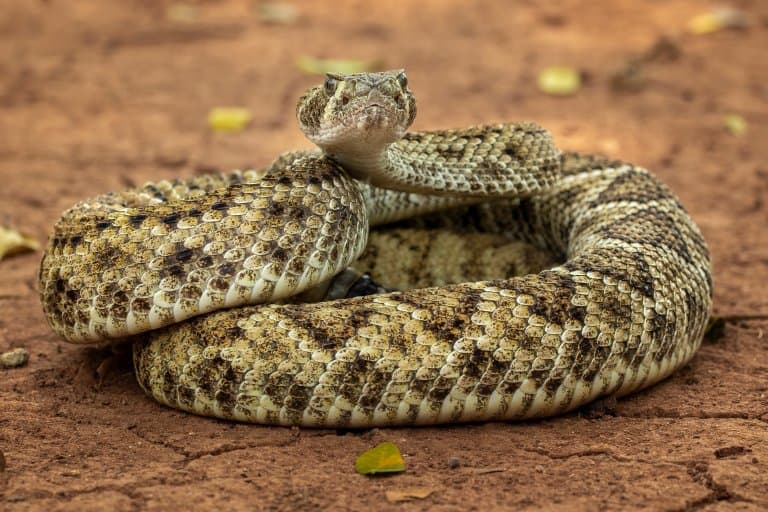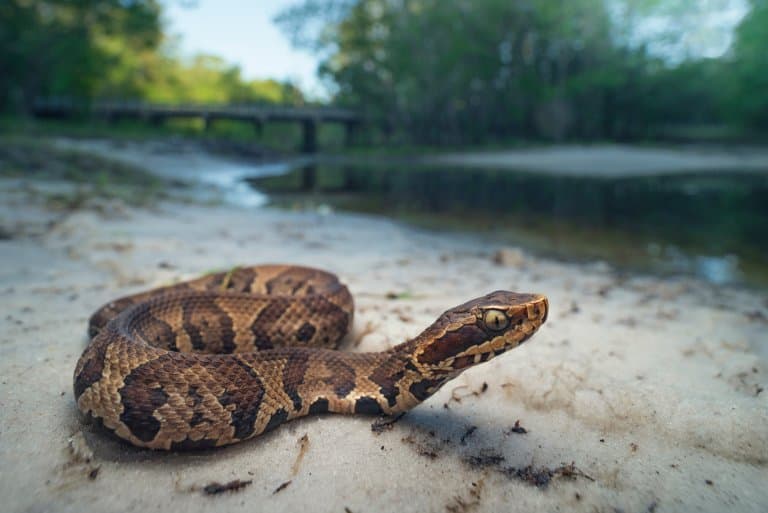Being a lab scientist is so cool. You get to put coloured liquids into other coloured liquids and make smoke and explosions and those strange foam snakes.
Being a field researcher is cool too, you can swim with sharks, witness epic migrations, and stand inside volcanoes.
And the best part is that someone else pays for it all! But this is also its limitation. Nobody rich and sensible is interested in funding research into the Top Ten Coolest Explosions. The science has to matter in some way to be worth the cost.
That’s why you won’t find a peer-reviewed research paper into the fastest snakes in the world; the only time the speed of a snake will be reliably verified is if it comes up as significant in some other paper.
And this lack of solid research leaves the market wide open for nonsense.

Luckily, there are some studies into the speeds of animals that help us better understand how their behaviours evolved and are useful to their needs. So, using a selection of these (and not just what other blogs are repeating) we’ve compiled a list of our own.
Here are some of the fastest snakes known from slithering on the ground, to striking!
Fastest Moving Snake (‘Rate of Slithering’)
First up, we’ve got a standard metric, ROS, or ‘Rate of Slithering’. This is, in the simplest terms, the speed at which you have to move, in the same direction, through the same medium, to stay out of its strike range if it’s coming towards you.
It’s always useful to have a benchmark by which to measure things relatively, and since the most reliable speed documents come from a paper on the common garter snake, Thamnophis sirtalis, this might be a good place to start.
The fastest speed recorded in this species is 1.24 km/h or 0.77mph. So, now that we have something to work with, let’s take a look at how some of the record holders compare.
3. Yellow-lipped Sea Krait – 1.41 m/s, 5 km/h (3.2mph)
The fastest snake in the water may be one of the most venomous known to man and they can likely swim faster, too.

This is faster than the yellow-bellied sea snake that holds the Guinness record and has a more reliable source backing it up. Sea craits are less than a meter long, and spend half of their time killing eels in the Indian Ocean and West Pacific.
They’re semi-aquatic, and spend the other half of their time on land, where they are outpaced by other, faster species. 1
2. Racer, Coluber constrictor – 1.56 m/s, 5.6 km/h (3.5 mph)
Sources for this one are thin on the ground, much like this snake. Racers are long and fast-moving snakes, with a punchy attitude.
Despite being entirely harmless they will aggressively defend against YouTubers who pick them up by the tail, and readily bite with ineffective little fangs.
They’re known for being high-energy, fast-paced snakes, but the exact speed is impossible to truly corroborate. The closest we’ve found is 5.6 km/h. 2
1. Black Mamba – 3 m/s, 11 km/h (6.8 mph)
This long and notorious snake benefits from a form of locomotion known as lateral undulation. This is the classic snake slithering technique and works better with a longer body and on bumpy surfaces.
This snake’s length and power give it tremendous burst speed, and while the figures are a bit all over the place, a conservative estimate of around 11 km/h has been published. 3
Strike Speed
For some reason, sidewinders are mistakenly credited as the snake with the fastest land speed, but while its movement across the sand is relatively sluggish at a maximum burst speed of 3.7 km/h, as a viper, it has lightning-fast strikes in its arsenal.
Still, the claims of 18 mph that are so readily repeated online appear to have no basis in reality, even for this fast-striking animal.
Perhaps more baffling are the claims that a Gaboon viper can strike at speeds of over 320 km/h or 200 mph – speeds that would no doubt destroy the snake’s own head on contact with a prey item.
To further emphasise the bulshittery of these myths, sidewinders were tested in one research paper to measure their speed against the accuracy of their strikes. The fastest successful strike was at 5.1 km/h, or 3.2 mph and the highest strike recorded (a miss) was 6.7 km/h or 4.2 mph.
But strike speed can be measured in two ways: absolute velocity and acceleration. If it took a snake a whole 4 seconds to get up to speed, velocity alone would be meaningless because the prey would have seen the strike coming and left. So, acceleration is equally, if not more important than velocity.
Thankfully, we have a sense of what to expect from both metrics, all from a single paper comparing two vipers with a non-venomous rat snake.
Here are the results.
3. Diamondback Rattlesnake – 2.95 m/s, 10.6 km/h (6.6 mph); acc.: 157 m/s2
Here’s where the sidewinder claims come into question. Of the three snakes compared in this paper, the diamondback rattlesnake, a close cousin of the sidewinder, topped out at 10.6 km/h, or 6.6 mph.

That’s just over a third of the speed sidewinders are said to strike at, and still some of the fastest strikes scientifically recorded.
2. Cottonmouth Viper – 3.1 m/s, 11.2 km/h (6.9 mph); acc.: 175 m/s2
The notorious cottonmouth was the second viper measured and had the fastest strike speed at 11.1 km/h or 6.9 mph.

Cottonmouths, like the diamondbacks, are highly venomous, stocky and powerful vipers from North America. But unlike the diamondbacks, these snakes are semi-aquatic, and as their Latin name suggests, eat a lot of fish.
While not all that good at grabbing fish underwater, they’ll corner them in drying pools to take a better shot. It’s safe to say that a fast strike speed is useful in this context. 4
1. Texas Rat Snake – 2.67m/s, 9.6 km/h (6.0 mph); acc.: 191 m/s2
While the Texas rat snake has the slowest velocity of the three at 9.6 km/h or 6 mph, it has the highest acceleration and doesn’t fall all that far behind the cottonmouth in speed.

Striking fast is what snakes evolved to do best, and it’s the only way to overcome the rapid reflexes of their prey.
So, regardless of how venomous they are, snakes all need to be able to act quickly, and the Texas rat snake shows us that you don’t need to be a viper to be a fast striker! 5
Fastest Strike On Record
There is one more snake that has been recorded to have a strike faster than all of these, and it’s also another one of the world’s most dangerous snakes. Of course, it’s from Australia.
Eastern Brownsnake – 3.4 m/s, 12.2 km/h (7.6 mph)
This is a large snake, up to 2 meters long, like the mamba and the racers, it’s slender and sleek, and this one causes the most snakebite fatalities in Australia.

It has the second-most toxic venom known to snakes worldwide, and the fastest strike we can find backed up by real research. 6
Bonus: Fastest Moving Snake
There’s an overlooked form of locomotion, reserved for about five species of snake worldwide. And it would be disingenuous to count it out, on account of this being the fastest known way for a snake to travel.
It appears that the fastest snake on earth doesn’t slither; it glides.
Paradise Flying Snake – 10 m/s, 36 km/h (22 mph)
The standard value of g, or gravitational acceleration on the surface of the Earth at sea level is 9.8 m/s2.
This means that for every second of freefall, an object should increase in speed by 9.8m/s. A freefall straight down from 25 meters up in the canopy, where this snake routinely initiates its glide, would result in a freefall time of 2.3s, and consequently a top velocity of 22.14m/s.
This translates to a speed of 79.72 km/h, or 49.53 mph.
Now, any poor snake could match this speed simply by falling out of a six-storey building, but what makes the flying snake special is that it has control over its fall. By stretching its ribs out wide, it creates a gliding angle, and by undulating, guides this glide to the desired location.
This slows the rate of fall somewhat and converts the downward momentum into forward motion. It’s not known exactly how fast they can go, but a reliable source confirms that speeds of 10 m/s are common. That’s more than 36 km/h or 22 mph!
This is the fastest snake on record and can glide faster than the fastest snakes can strike. 7
Final Thoughts
Snake speeds are not well documented, despite being well made up all over the internet. The above list won’t likely be an accurate ranking of the fastest snakes but it is the most accurate we can find using reliable sources.
Snakes are extremely fast because they tend to eat extremely fast things, but evolution doesn’t create 200 mph freaks unless there is a prey animal that can flee at 199.9mph or a predator that can chase them at 200.1 mph.
Speed is the product of an evolutionary arms race, and the snake has evolved to ambush its prey as close to the speed of reaction time as it can get. As soon as the snakes start to get the upper hand, the prey animals get faster, keeping the balance.
When scanning the internet for facts, use the combined powers of common sense and source-checking. If there’s a fact that seems courageous and does nothing to back it up with a reliable source, it’s probably been extruded from the colon of the author.
Fact Sources & References
- Richard Shine; Harold G. Cogger; Robert R. Reed; Sohan Shetty; Xavier Bonnet (2003), “Aquatic and terrestrial locomotor speeds of amphibious sea-snakes (Serpentes, Laticaudidae)“, Sci Hub.
- “Racer“, Britannica.
- “Black Mamba Speed“, PSU.
- Marcus Woo (2016), “To Scientists’ Surprise, Even Nonvenomous Snakes Can Strike at Ridiculous Speeds“, Smithsonian Magazine.
- David A. Penning, Baxter Sawvel and Brad R. Moon (2016), “Debunking the viper’s strike: harmless snakes kill a common assumption“, Biology Letters.
- P. B. Whitaker, K. Ellis, R. Shine (2021), “The defensive strike of the Eastern Brownsnake, Pseudonaja textilis (Elapidae)“, Wiley.
- Sarah B. Dellinger, Raffaella De Vita, Pavlos P. Vlachos, Martha M. Muñoz, John J. Socha (2022), “Material properties of skin in the flying snake Chrysopelea ornata“, Wiley.
